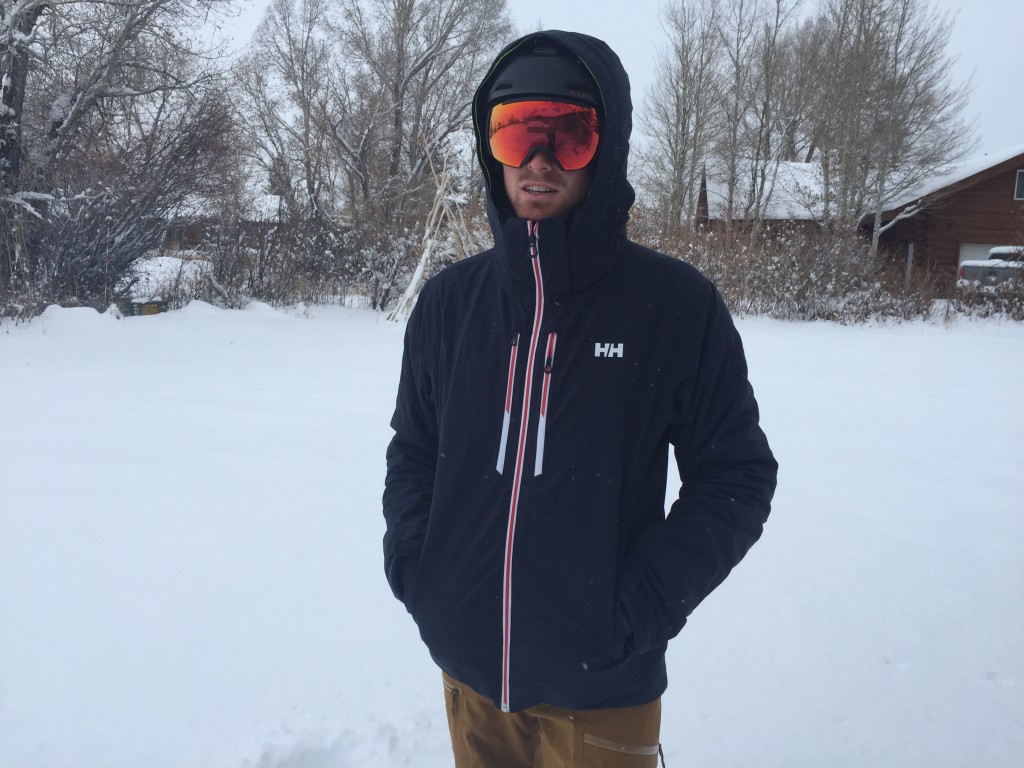
Free skiing is a fun and exciting sport. It has many advantages over traditional Alpine Skiing, including the adrenaline rush of climbing up natural terrain, no rules, and the freedom to ride or ski as you wish.
Freeriding, historically speaking, was a response against the rigidity of competition that was prevalent during the early days. Freeriding has made great strides in recent years. More people want to have fun riding off-piste, and put their own stamp on a mountain.
Athletes who compete in these events are judged on their ability to achieve high speeds and daredevil tricks in a way that resembles the scoring system in gymnastics. Skiers must exhibit a lot of creativity and fluidity.
Freeride World Tour, which was started in 1998, is a showcase for athletes and a chance to show their unique skills. It has grown to be an internationally recognized and highly regarded event.

The Winter X Games (Freeskiing World Qualifier), and the Winter X Games are two of the most well-known freeride competitions. These events include backcountry and alpine skiing.
These events are traditionally held in remote areas, with no lifts available. They are reserved for experienced skiers who can navigate safely up and downstream of the mountain. These competitors use a variety of equipment to make the most of their experience.
Conditions and snow stability can vary greatly so it is essential to carefully evaluate the conditions before you venture onto the slopes. A typical freeride competition allows competitors to see the course in advance using satellite maps or binoculars, so they can plan their route.
Skiers must be able ski in tight spaces to avoid injury. Skiers must be able ski in avalanche terrain and have the gear necessary to deal with any situation.
One example is that skiers may wear beacons to transmit their location in an avalanche. Others might have a shovel to help dig out a friend in an avalanche. Or a probe to determine where the avalanche buried them.

These are just some of the many types of gear you can use for freeride skiing. Although the gear may vary depending on the terrain, it is usually very similar.
Freeride skiing is lighter and more narrow than race or slalom skis. These skis are more suitable for skiing on powder snow and off-piste.
There are a few different styles of freeride skis to choose from, and they range in price depending on their size and shape. These are some of the most widely used skis and are available in ski shops all over the world.
FAQ
How much luggage should you take?
The amount of luggage you take depends on the length of your trip. If you are flying, your hand luggage is limited to less than 20kg. If you're traveling by bus or train, you'll need more space.
An airport form with information regarding your flight will be handed to you upon arrival. This will include information such as the weight of your bags and whether you require assistance when checking them in.
This should be checked before you leave home. If you don’t check it, you might end up waiting hours for everyone else to do so.
It is best to travel light because you never know what might happen. For example, if your bag gets lost, you won't have anything to wear.
How can you find affordable accommodations when you travel abroad?
Hostels, hotels, guesthouses, and bed and breakfasts are all options for cheap accommodation.
Hostels are inexpensive and offer dorm-style rooms where guests share bathrooms and living areas.
Hotels are usually located in touristy areas and provide private rooms with en suite bathroom facilities.
Guesthouses look and feel similar to hostels except that there are often more people in each room.
These beds and breakfasts are very well-liked by budget-conscious travelers. Guests are able to stay in private homes, and they can enjoy a full-service breakfast.
How do I travel light?
There is no right or wrong way to pack for a trip. These are some suggestions to help you pick the right items to take on your trip.
-
Only take what you actually need.
-
You should only pack what you actually wear.
-
Don't overload yourself with too many items.
-
You should ensure that you have enough space in your luggage.
-
Always double-check to make sure that everything is in your bag.
-
Make use of the free storage facilities
-
Instead of purchasing bottled water, use reusable water bottles.
-
Instead of carrying a suitcase, use a backpack.
-
Take public transport if possible and instead walk or bike.
-
The right size bag is important.
-
Avoid carrying heavy objects.
-
You should be prepared for every eventuality
-
You can't leave any trace.
How can I make traveling more enjoyable?
Traveling shouldn't be just about getting to one destination from another. You should include all the experiences you have along the way.
So we have created an app called "Traveler," which helps you plan your trip by creating itineraries based on your interests.
We are currently adding new features like booking hotels, flights, and renting cars.
This project was created to provide a simple tool to help people plan their travels and make the most of what they have while on vacation.
Statistics
- They're also likely to offer babysitting services, in case you'd like to have dinner one night after 7 p.m. (travelandleisure.com)
- No Checked Bags: No Alcoholic beverages with more than 70% alcohol (over 140 proof), including grain alcohol and 151 proof rum. (tsa.gov)
- You can use compression sacs or cubes to reduce the volume of your clothes by up to 80%—this is especially convenient for bulky items such as sweaters and jackets. (eaglecreek.com)
- According to Maori legends, this park holds 14 fjords that were all carved by a giant stonemason with an adze. (busytourist.com)
- Between the ages of 11 and 13, kids, or tweens, will likely want some autonomy but also need boundaries. (travelandleisure.com)
External Links
How To
How to plan your next getaway
Booking flights, hotels, car rental, and activities are just a few of the many aspects involved in planning a trip. It also includes important considerations such as budget, schedule, destination, weather forecast, etc.
These are important points to remember when planning your next vacation.
To ensure you get everything right, we have created a step-by-step guide to help you plan your next vacation. This guide is based on customer feedback and our experience. We hope that you will find the following guide useful in planning your next vacation.
Steps:
-
Plan your Budget - Planning your budget is one of the most important steps in preparing for a trip. You must know how much money you want to spend on your trip before you start thinking about where to go and what to do. In the event that you don't have enough cash, you might need to cancel your plans.
-
Book Flights - The first thing you should do after deciding on your budget is book your tickets. Be sure to get the lowest price flight deal. You should also check to see if any airlines offer special deals during specific seasons. These deals could help you save a lot of cash.
-
Pick Your Destination. Once you've booked your tickets, the next step is to decide where to travel. Multiple factors come into play when choosing your destination, including location (where you're going), climate (what season to visit), culture (how friendly people are), and cost (how affordable it is).
-
Locate Accommodations – After you've chosen your destination, you need to locate accommodations. There are many choices for accommodation. You can choose from affordable hostels or luxury suites. The type of accommodation you choose will depend on your preferences and needs. If you are looking for somewhere close to the center of the city, a hotel might not be the best option. You may prefer quieter areas away from the crowds and a homestay could be better suited for your needs.
-
Select Activities and Attractions - Now is the time for you to choose the attractions and activities that you want to include in your itinerary. You have the option to choose a handful of activities or add more depending on the length and duration of your stay.
-
Determine your schedule - After you've chosen the attractions and activities that you would like to include in your itinerary, it's now time to create it. A fixed schedule will ensure that you get the best value for your trip. But, it's possible to enjoy your trip more if your schedule is flexible.
-
Create an Itinerary - An itinerary is a list of all information related to your trip. These information can include flights, accommodations, activities and restaurants. You will need to record them all and make a list.
-
Research Online - Before leaving for your trip, research online so you won't miss anything. Find out what other travelers have to say about different destinations by reading reviews and testimonials. This will help you plan.
-
Don't Overpack - This is one of the most common mistakes people make when packing. Instead of bringing five sets of clothes, bring three. Bring clothing appropriate for the weather you're visiting.
-
Be prepared. Have everything ready before setting off for your trip. You don't want to waste time searching for important documents while you're still in transit.